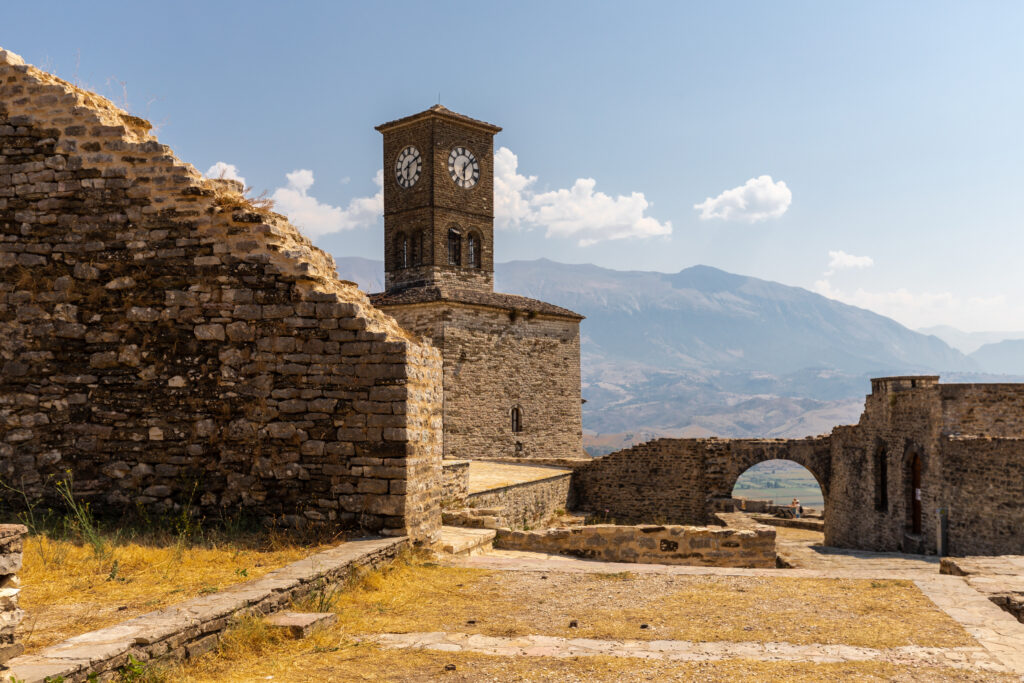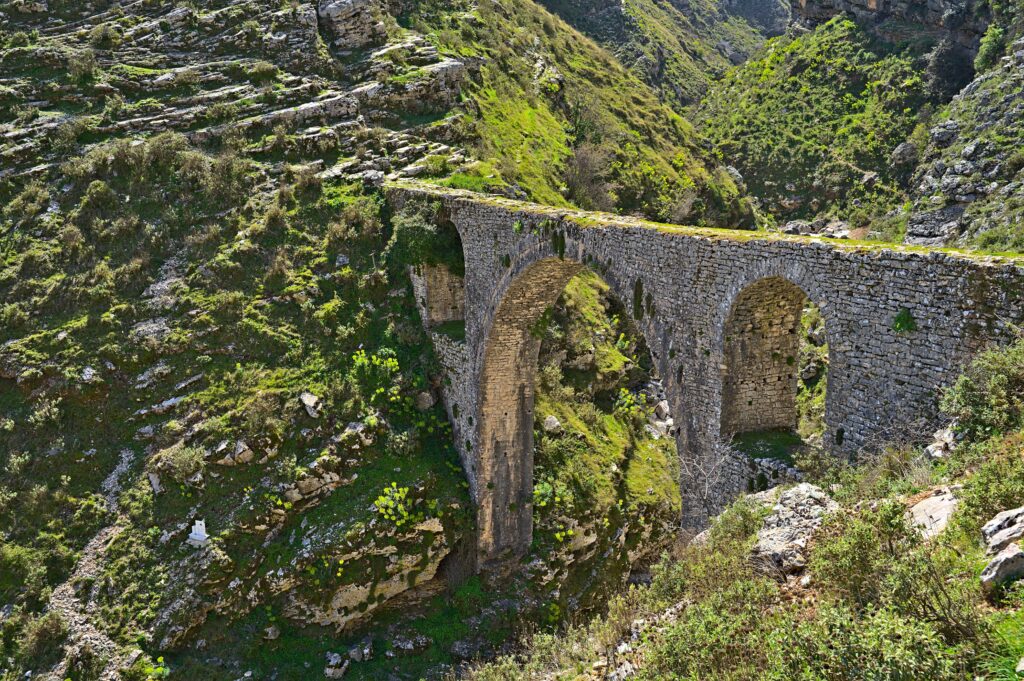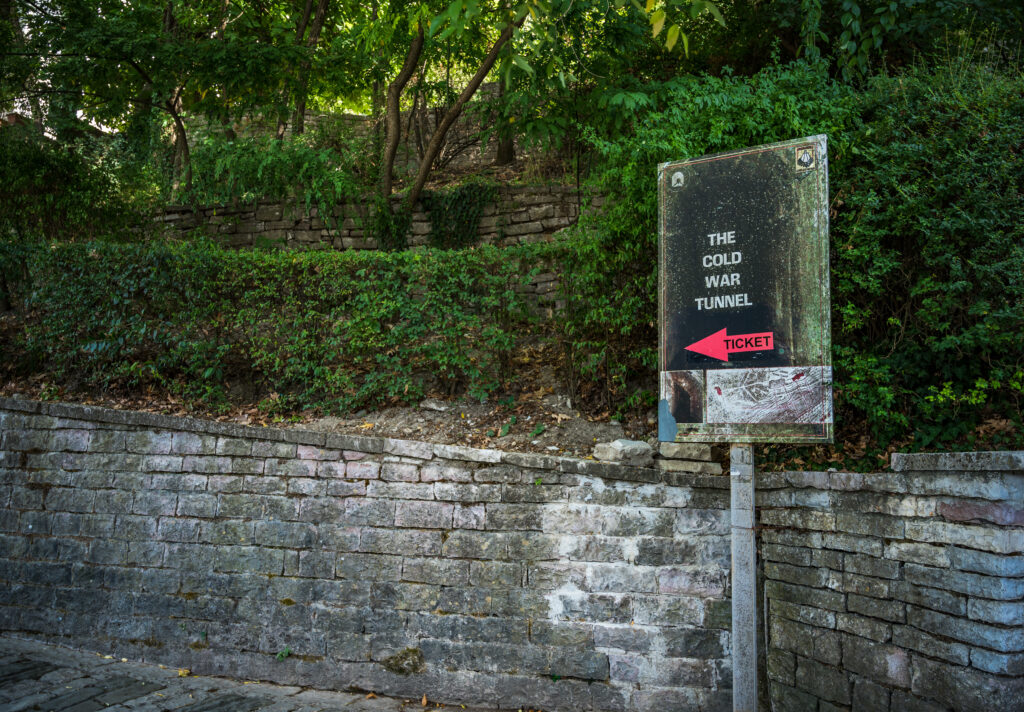
In southern Albania, Gjirokastër - or Gjirokastra - is the best-preserved Ottoman town in the country. In fact, along with the famous historic center of Berat, it is a UNESCO World Heritage Site. Beyond the austere impression of its gray stone houses, the town reveals a charm all its own, with its leaning streets, artisan stores and multicultural atmosphere. To discover Gjirokastër in Albania, Petit Futé takes you on a tour of its must-sees.
1- Visit the citadel of Gjirokastër

Overlooking the town, the Gjirokastër Citadel stands on a rocky outcrop 336 meters above sea level. The largest fortress inAlbania, it is 600m long and 70m wide at its widest point. A stroll along its ramparts affords a panoramic view of the old town, the Drino valley and the "large mountain" massif. The Byzantines, who fortified the site in the 5th century, called it Argyrokastro ("silver castle"), which gave the town its current name.
Activities to book 1- Take a walking tour of the city's must-see sites.
2- Stroll through the old bazaar

The historic heart of the city, Gjirokastër 's old bazaar charms travelers with its leaning alleys and traditional buildings. Here you'll find numerous small stores and craftsmen selling carpets, handcrafted teas, ceramics and musical instruments. Petit Futé advises you to visit in the evening to make the most of the bustle, especially at the bazaar pass, a crossroads at the top of Place Çerçiz-Topulli.
The must-read article to discover Albania's must-sees.
3- What to do in Gjirokastër, Albania? Visit the Skenduli House

The fortified house of Skënduli is the best preserved in Gjirokastër. Built in the 17th century and modified in 1827, it was returned to the Skënduli family after housing a museum during the Communist era. The richest house in town, it featured nine fireplaces, six bathrooms, four hammams and twelve bedrooms. In the kitchen, you'll see all the utensils that were used until the 2000s by the owners.
Activities to book a tasting of local wines and cheeses on a hidden stone terrace.
4- The Bazaar Mosque

The Bazaar Mosque remains Gjirokastër's only ancient mosque, spared from the atheist campaign of 1967. Built in 1757, this mosque represented the center of the city's commercial and religious district in Ottoman times. Its prayer hall retains some of its original frescoes. Its minaret rises to a height of 22 metres.
5- What to do in Gjirokastër, Albania? Antigonia archaeological site

Just a stone's throw from Gjirokastër is the archaeological site of Antigonia. This Greek city, founded in 295 BC by Pyrrhhus in honor of his wife Antigone, lies in a magnificent setting at the foot of Mount Çajupi. Burnt down by the Romans and reduced to slavery in 168 BC, the city was repopulated at the beginning of the Christian era before being abandoned in the 6th century.
Read the article to discover the world's most beautiful ruins, some of which can be found in Albania.
6- The Ethnographic Museum

The Ethnographic Museum of Gjirokastër stands on the site of the birthplace ofEnver Hoxha, the Stalinist Albanian politician behind the atheist campaign and anti-religious persecution of the country's Muslims and Christians. In 1966, he had a traditional building erected on the site of his former home to house an "anti-fascist" museum. Today, you'll find reconstructions of rooms from a typical 19th-century house.
7- Visit the Ali Pacha Bridge

Located on the outskirts of the city, the Pont Ali-Pacha is actually a section of an ancient aqueduct built between 1812 and 1813. A short 30-minute walk (6 km round trip) takes you from the old town. Built at the request of the Greco-Albanian governor Ali Pacha de Tepelena, it was used to supply water to the citadel. It spans the Manala valley and is 16 metres high and 40 metres long.
Activities to book gjirokastër: a guided day trip to Gjirokastër, Lekursi, Blue Eye or the Mesopotam monastery.
8- What to do in Gjirokastër, Albania? Visit the Cold War Museum

Since 2014, the Cold War Museum in Gjirokastër has been dedicated to the Communist dictatorship and its effects on the country. The museum is housed in former 1960s underground tunnels built to shelter the city's apparatchiks in the event of bombing, and looted in 1991. Guided tours take place at the beginning of each hour.
9- Nostalgia Tunnel

Gjirokastër's Nostalgia Tunnel is a must-see if you want to delve deeper into the city's history. Located just a stone's throw from the Cold War Museum, the tunnel has been transformed into a veritable museum, offering exhibitions on historical events and everyday life in the town. Numerous objects and photographs are on display. Admission to the tunnel is very affordable, costing around 1 euro.
Related article what to do in Berat
10- Visit the Church of the Holy Savior

TheChurch of the Holy Savior is a former Orthodox cathedral built in 1784 in Gjirokastër. It was the seat of the town's bishopric. Following the atheist campaign of 1967, the cathedral was damaged and lost most of its frescoes. Its original icons were stolen in the 1990s. Although the cathedral is closed most of the time, don't hesitate to walk past and take a tour of the building.
11- Visit the Blue Eye hot springs

A natural wonder, theBlue Eye is a resurgence of the Lumi Zi ("black river"). It owes its name to the hues of the water that gushes to the surface. This natural pool of almost 100 m² is a brilliant turquoise blue around the edges, and dark black in the center, reminiscent of an eye - hence its nickname. Surrounded by vegetation, the site is accessible on foot or by car.
Activities to book a day trip to the Blue Eye spring, Ksamil and Saranda islands, departing from Tirana, Durrës or Golem.
Discover also the most popular activities in and around Gjirokastër:
Where to stay in Gjirokastër, Albania?
Among the accommodation available in Gjirokastër, here is a Petit Futé selection of some of the best-rated:
- The most traditional
Hotel Kalemi 2 combines old-world charm with modern comforts. We enjoyed breakfast here, as well as the terrace overlooking the citadel and Mount Çajupi. Information and booking here.
- Most central
TheHotel Fantasy is a new establishment, allowing you to stay right in the center of the city. Rooms are comfortable and well-equipped, some with balconies. To book your stay, click here.
- The best table
Also centrally located in town,Hotel Kodra boasts some of the finest dining in Gjirkokastër. Don't hesitate to have your meal or breakfast served on the terrace, overlooking the town. Information and booking via this link.
Did you know that you can travel to Albania without taking a plane? Book your train tickets today and take advantage of the best fares:


